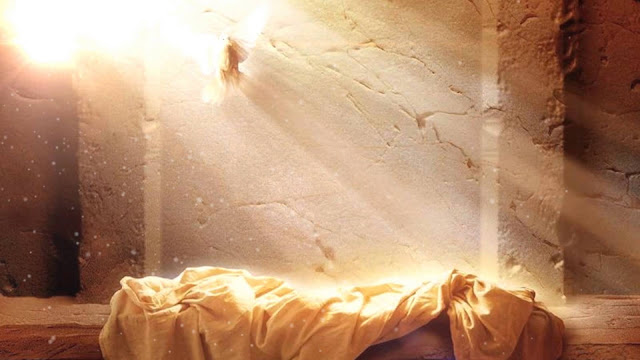 Can a Scientist Believe in the Resurrection?
Can a Scientist Believe in the Resurrection?
The Christian gospel is based squarely on a miracle. It was the miracle of the resurrection of Christ that
started it going, and that same miracle is its central message. Indeed, the basic qualification of a Christian
apostle was to be an eyewitness of the resurrection, and for centuries Christians have greeted each other
at Easter time with the confident words, "Christ is risen! He is risen indeed!"C.S. Lewis expresses the situation precisely: "The first fact in the history of Christendom is a number of people who say they have seen the Resurrection. If they had died without making anyone else believe this 'gospel', no Gospels would ever have been written." According to the early Christians, then, without the resurrection there simply is no Christian message. Paul writes: "If Christ has not been raised, our preaching is useless and so is your faith."
The question is: can we make sense of this claim in a scientifically literate society? For the Christian gospel conflicts with the widely held notion that belief in miracles in general, and New Testament miracles in particular, arose in a primitive, pre-scientific culture where people were ignorant of the laws of nature, and readily accepted miracle stories.
When a miracle takes place, it is the laws of nature that alert us to the fact that it is a miracle. It is important to grasp that Christians do not deny the laws of nature. It is an essential part of the Christian position to believe in the laws of nature as descriptions of those regularities and cause-effect relationships built into the universe by its Creator and according to which it normally operates. If we did not know them, we should never recognise a miracle if we saw one.
To suppose, then, that Christianity was born in a pre-scientific, credulous and ignorant world is simply false to the facts. The ancient world knew the law of nature as well as we do, that dead bodies do not get up out of graves. Christianity won its way by dint of the sheer weight of evidence that one man had actually risen from the dead.
The early Christians did not simply assert that the tomb was empty. Far more important for them was the fact that subsequently they had met the risen Christ, intermittently over a period of forty days. But it is not only the number of eyewitnesses who actually saw the risen Christ that is significant. It is also the widely divergent character of those eyewitnesses, and the different places and situations in which Christ appeared to them. None of the disciples was expecting to meet Jesus again. The expectation of Jesus's resurrection was not in their minds at all. Instead, there was fear, doubt and uncertainty - exactly the wrong psychological preconditions for a hallucination.
To anyone who knows anything about the ancient laws regarding legal testimony, it is very striking that the first reports mentioned in the Gospels of appearances of the Risen Christ were made by women. In first-century Jewish culture, women were not normally considered to be competent witnesses. At that time, therefore, anyone who wanted to invent a resurrection story would never have thought of commencing it in this way.
The evidence of the empty tomb, the character of the witnesses, the explosion of Christianity out of Judaism and the testimony of millions today are inexplicable without the resurrection. As Holmes said to Watson: "How often have I said to you that when you have eliminated the impossible, whatever remains, however improbable, must be the truth?"
John Lennox is Professor of Mathematics at Oxford University, a Fellow in Mathematics and the Philosophy of Science at Green Templeton College, Oxford and an Honorary Fellow at Wycliffe Hall, Oxford.


Comments
Post a Comment